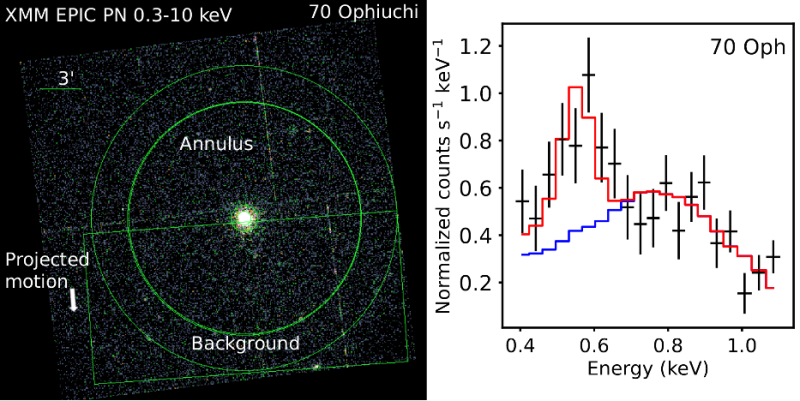Follow us on Google News (click on ☆)

An international research team, including a CNRS researcher (see box), has for the first time detected X-ray emissions from the astrospheres of three solar-type stars, thus providing new constraints on the mass loss rates of these stars. This study, based on observations with the XMM-Newton space telescope, is published in Nature Astronomy in April 2024.
Primarily composed of protons and electrons, stellar winds also contain a small amount of heavier ions (e.g., oxygen, carbon), which emit X-rays when they capture electrons from interstellar neutrals.
Within our solar system, this so-called charge exchange emission is observed around the planets, comets, and in the heliosphere, and acts as a natural laboratory for studying the composition of the solar wind. However, observing it in astrospheres is challenging due to its low brightness. Moreover, the great distance of the stars complicates the separation of the astrosphere's signal from that of the star itself.
The researchers measured the spectral lines of oxygen ions with XMM-Newton to quantify the oxygen content and ultimately determine the total mass of the winds emitted by the stars.
In the future, high-resolution instruments, such as the X-IFU spectrometer of the European Athena mission, will facilitate the direct detection of stellar winds in X-rays, opening new perspectives for studying these phenomena.

X-ray image of the star 70 Oph (left) and its energy spectrum (right).
The spectrum of the stellar wind (red) compared to that of the star (blue, scaled) shows an oxygen excess at 0.56 keV, characterizing the extended astrosphere.
© Kislyakova et al. Nature Astronomy, 04/2024
Reference:
Kislyakova, K.G., Güdel, M., Koutroumpa, D. et al. X-ray detection of astrospheres around three main-sequence stars and their mass-loss rates. Nat Astron (2024)